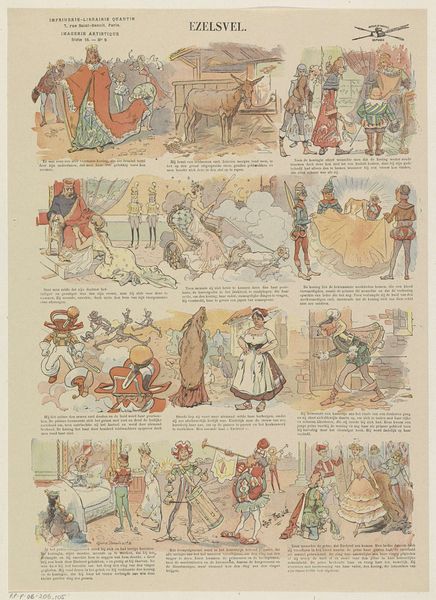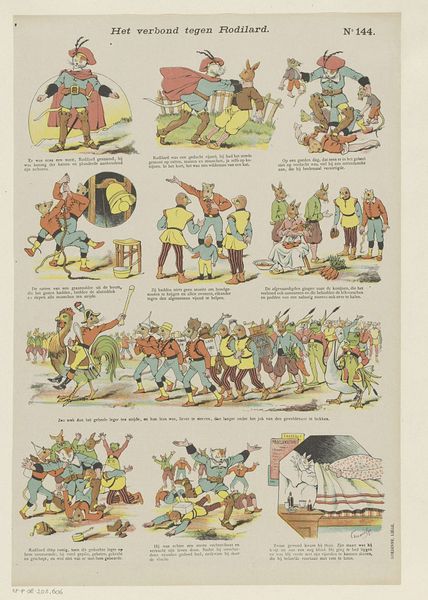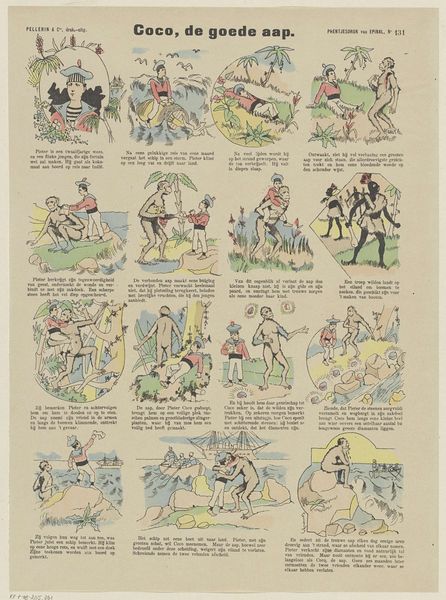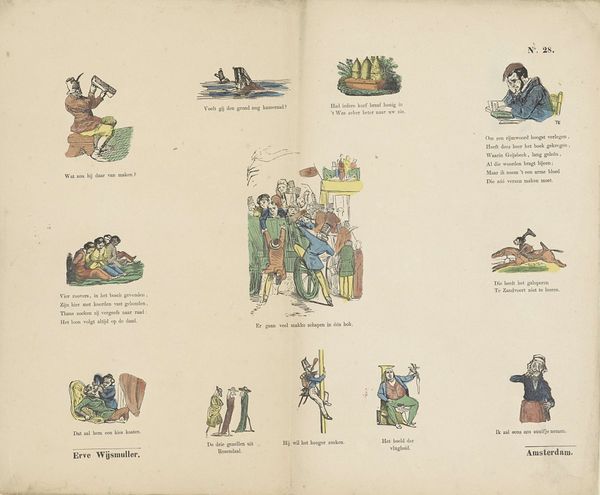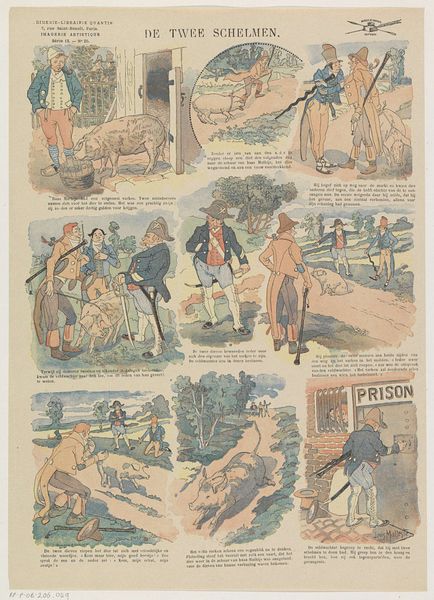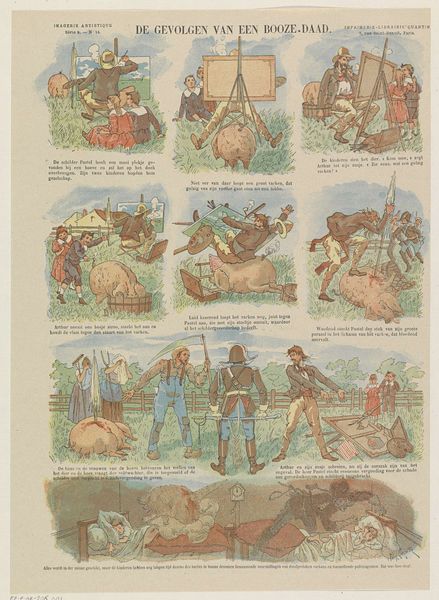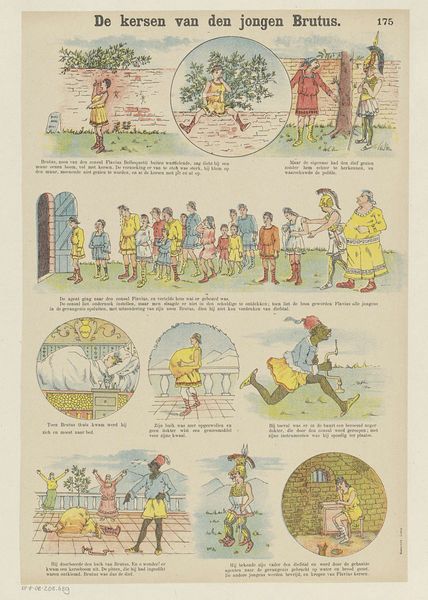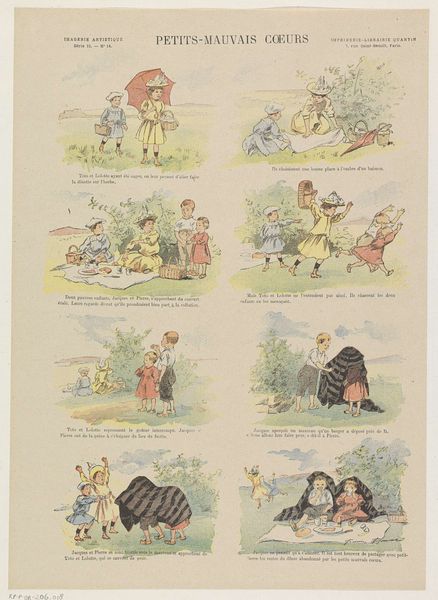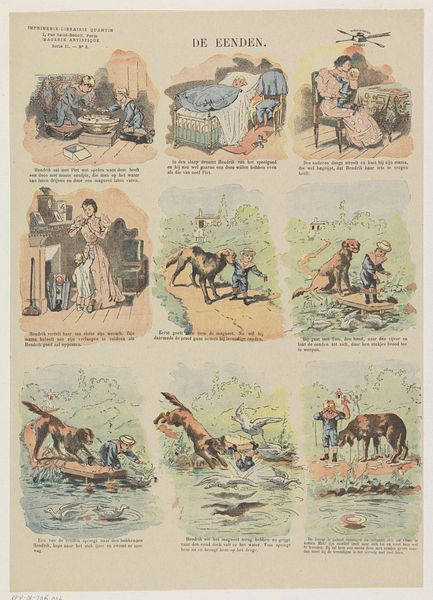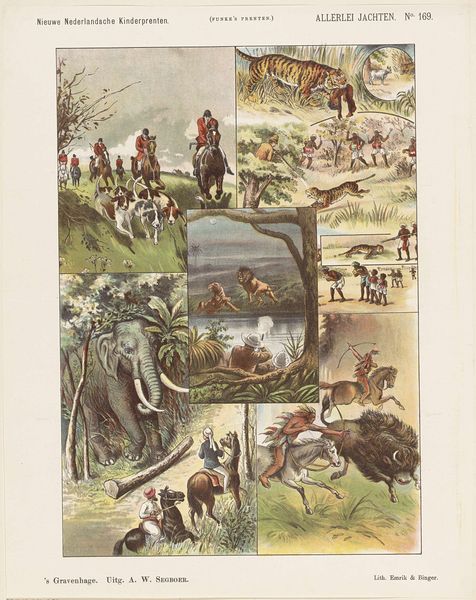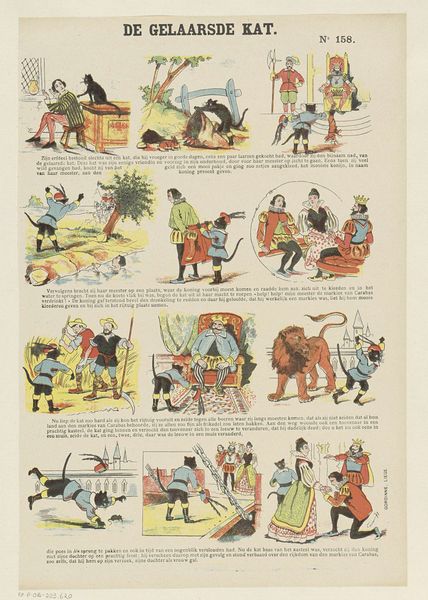
lithograph, print
#
narrative-art
#
lithograph
# print
Dimensions: height 369 mm, width 266 mm
Copyright: Rijks Museum: Open Domain
Curator: This lithograph print is titled "De Reis van Polichinel," dating back to between 1876 and 1890. Editor: Immediately striking! The way these miniature scenes unfurl gives off a charming, childlike energy. Curator: Absolutely, Carolus-Duran employs narrative-art across the whole surface, in effect, creating a complex visual journey. What social commentary can we extract here? I am noticing caricatured depictions. Editor: Symbols everywhere! We have figures on swans, traveling by shoe-boat… each segment pulls from a very particular symbolic language. Take the swan. Often, in art, it refers to grace, beauty and is connected with tales of transformation. And yet, how is it acting here, in terms of meaning? Curator: Well, the swan supports Polichinel’s literal journey—a journey presented, ironically, within the format of a mass-produced print, distributed for common consumption! But notice too, these racist portrayals are inescapable. How are we, today, reckoning with them? What's the artist communicating by including them? Editor: You are right: how these figures exist inside colonial tropes. Are they present here, only as mocking devices, in what the artist wants us to see? I am certain the intended viewer knew them. Here is "cultural memory" being shaped on the very page. Are they symbolic for aspects of colonialism—showing cultural hierarchies? How do the chosen symbols connect to other common iconographic choices in similar artwork? Curator: The scale allows all this complexity and uncomfortable, and harmful images, to function and thrive—they all reinforce very negative ideologies, I think we must admit. Even in playful, fantastical contexts. Editor: Agreed, those caricatures disturb, even nested within this otherwise whimsical journey. We've both peeled away how meaning becomes entangled, for better or worse.
Comments
No comments
Be the first to comment and join the conversation on the ultimate creative platform.
